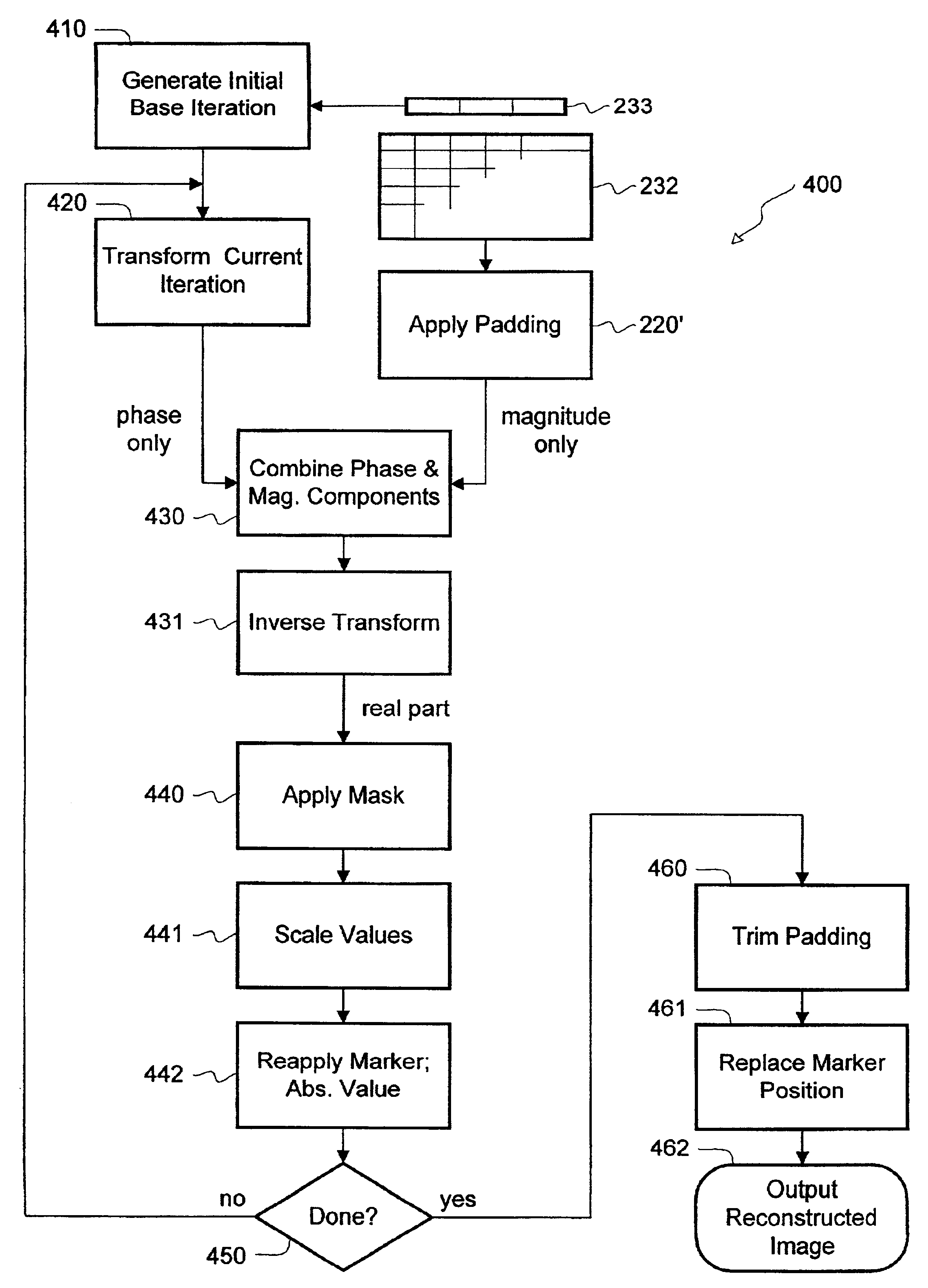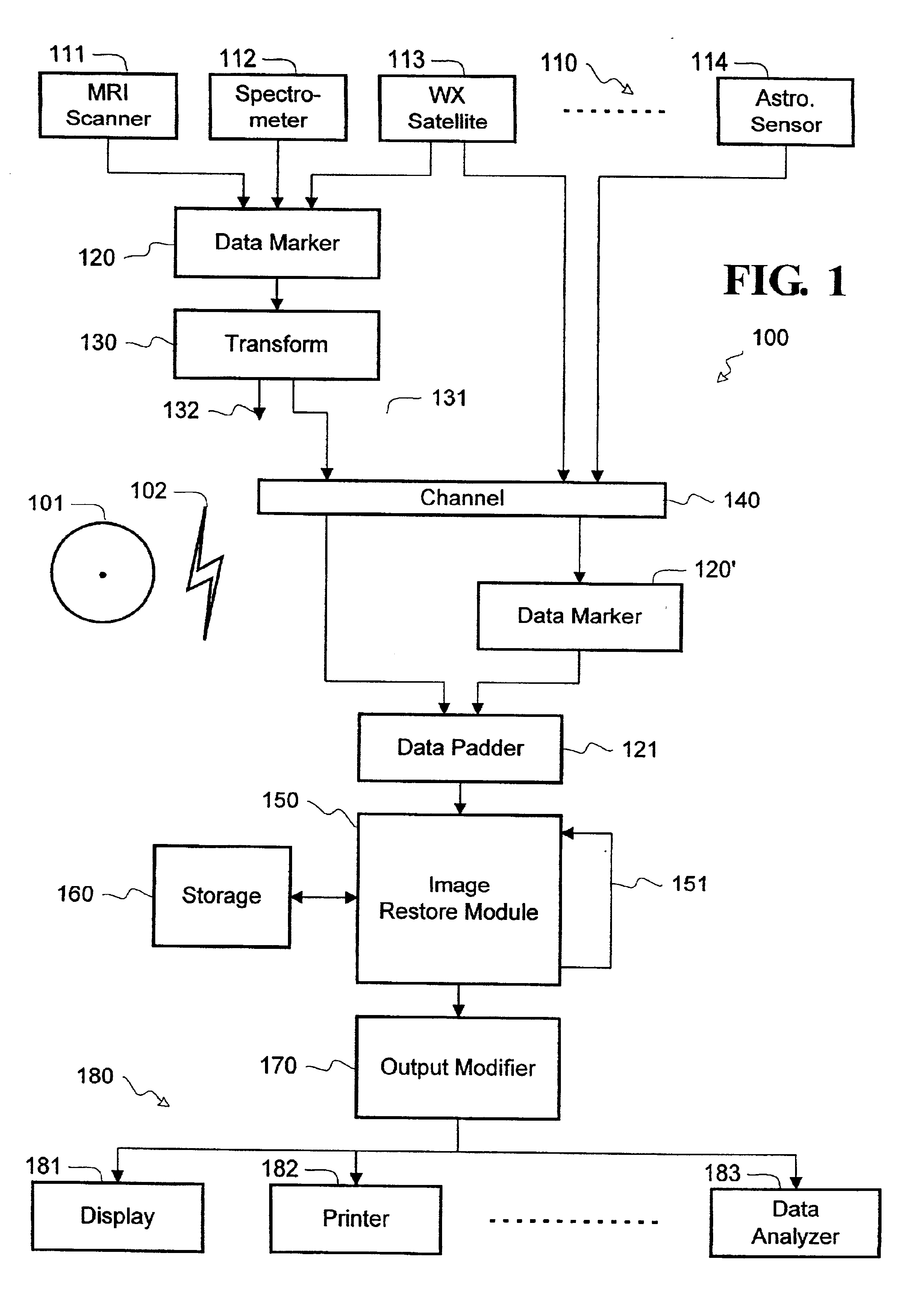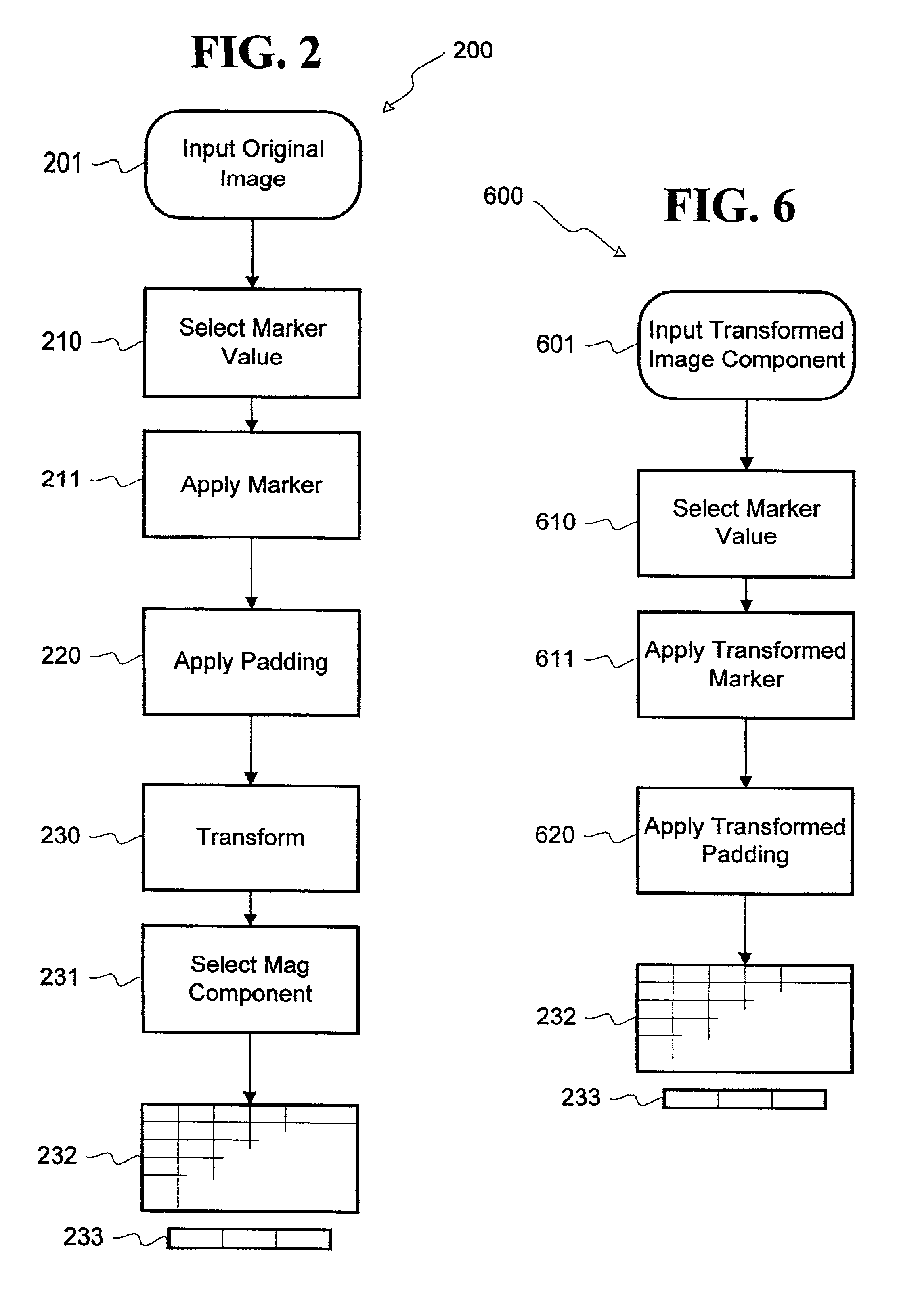Image restoration from transformed component data
a component data and restoration technology, applied in the field of image data processing, can solve the problems of inability to meet the needs of large data volumes, inadequate restoration or reconstruction from only one component of the transform domain, and open problems such as non-unique solutions, and achieve the effect of improving convergen
- Summary
- Abstract
- Description
- Claims
- Application Information
AI Technical Summary
Benefits of technology
Problems solved by technology
Method used
Image
Examples
Embodiment Construction
026]The pixel marker(s) used in the two methods anchor the solution. A pixel-marker amplification gain factor K hastens convergence of the iterative magnitude-only reconstruction. That is, Imax=K*sum(I(n1,n2)) and xmax=K*sum(x(n)) are significant in the convergence of the reconstruction process.
[0027]The top row and left column are then trimmed from restored image J(n1,n2). Alternatively, the restored image J(n1,n2) can be trimmed such that the resultant image is a [(N1−1)×(N2−1)] image.
DESCRIPTION OF EMBODIMENTS
[0028]FIG. 1 shows an example of a system 100 for hosting the invention. The invention can be implemented in software, hardware, or any combination. A computer-readable storage or communication medium such as 101 or 102 may hold or transmit some or all of any computer instructions or data for executing the invention.
[0029]A number of different sources 110 in an input section may provide an image or other data. Some produce an original image in the base image domain such as s...
PUM
 Login to View More
Login to View More Abstract
Description
Claims
Application Information
 Login to View More
Login to View More - R&D
- Intellectual Property
- Life Sciences
- Materials
- Tech Scout
- Unparalleled Data Quality
- Higher Quality Content
- 60% Fewer Hallucinations
Browse by: Latest US Patents, China's latest patents, Technical Efficacy Thesaurus, Application Domain, Technology Topic, Popular Technical Reports.
© 2025 PatSnap. All rights reserved.Legal|Privacy policy|Modern Slavery Act Transparency Statement|Sitemap|About US| Contact US: help@patsnap.com



